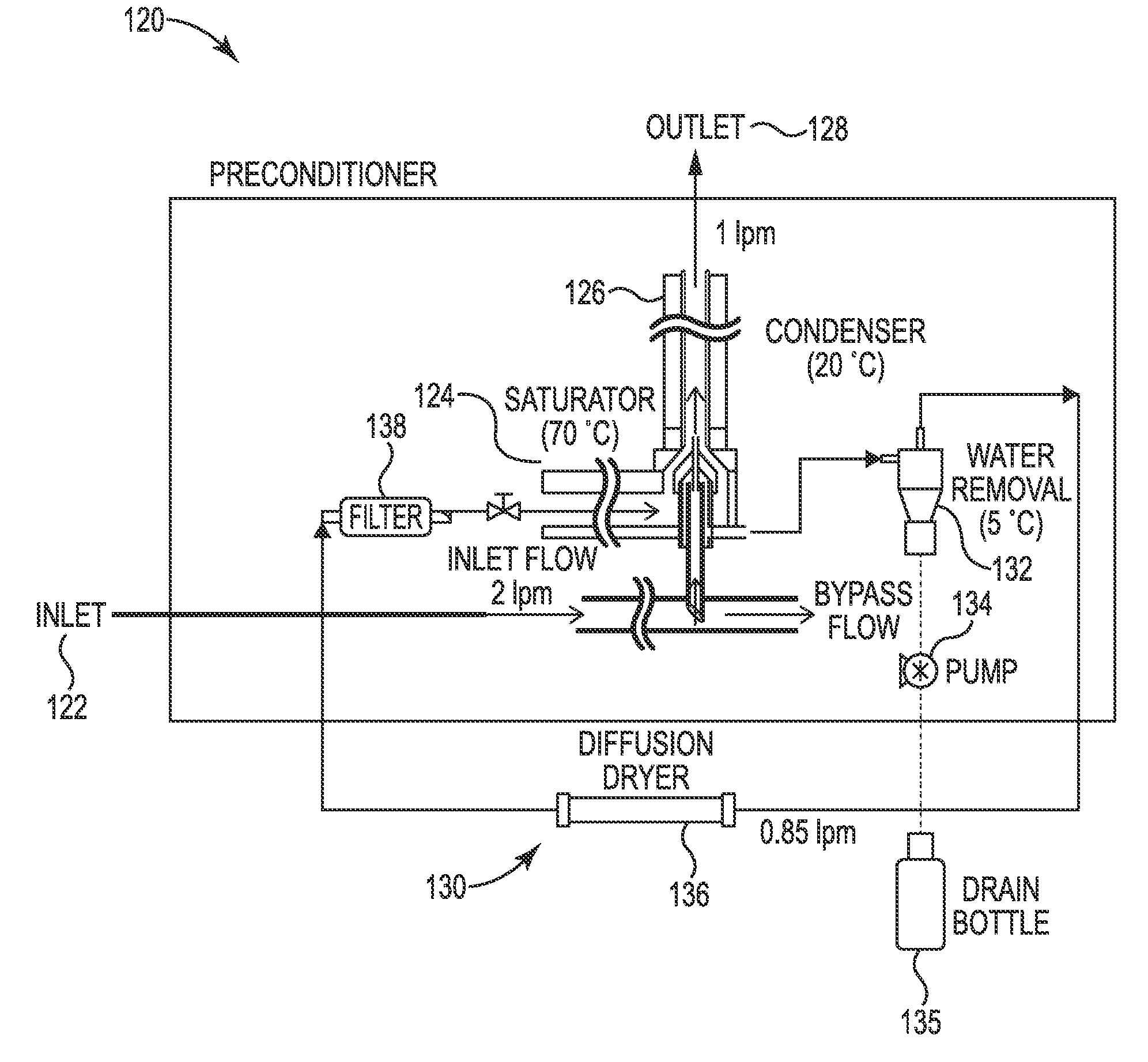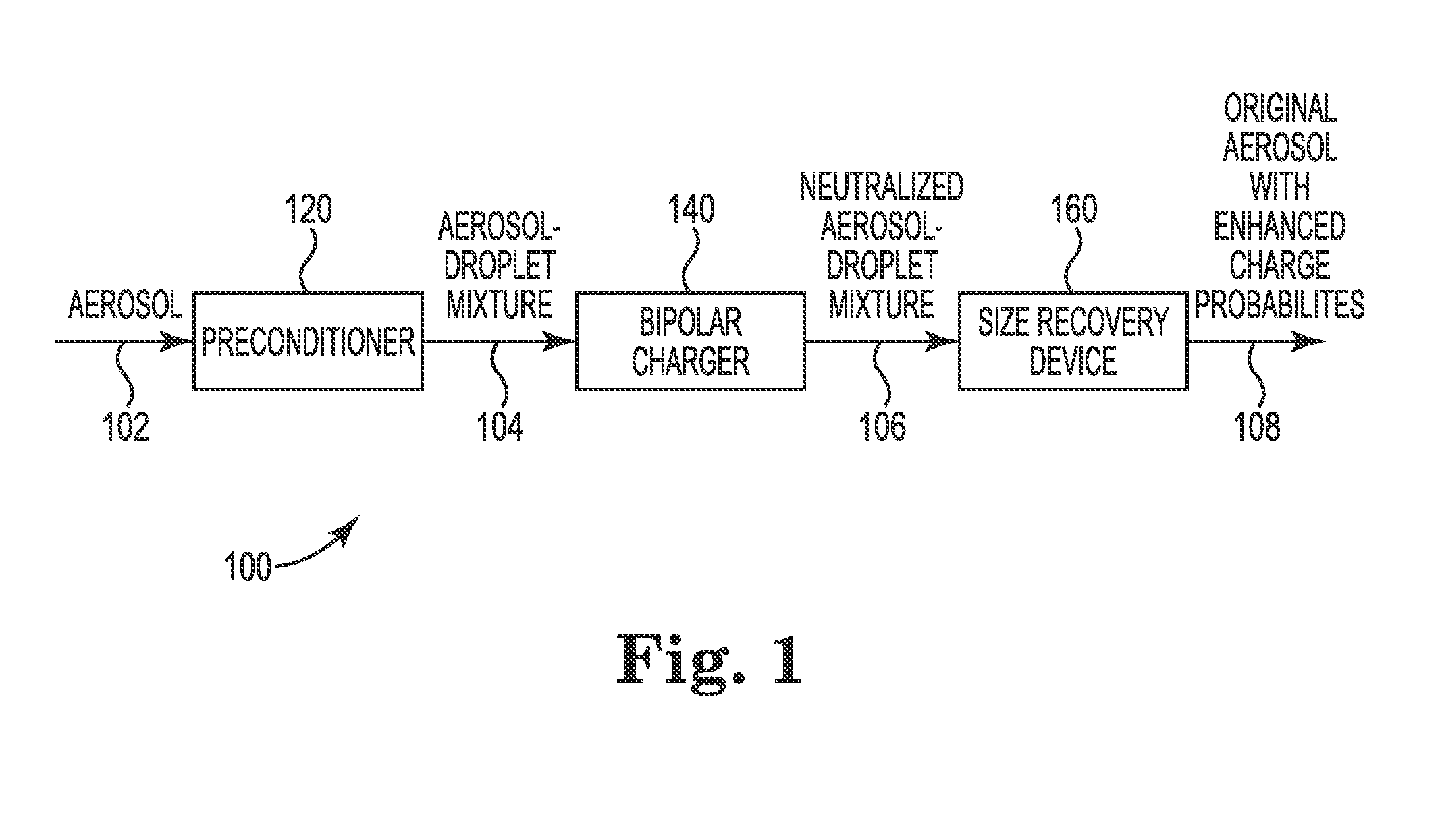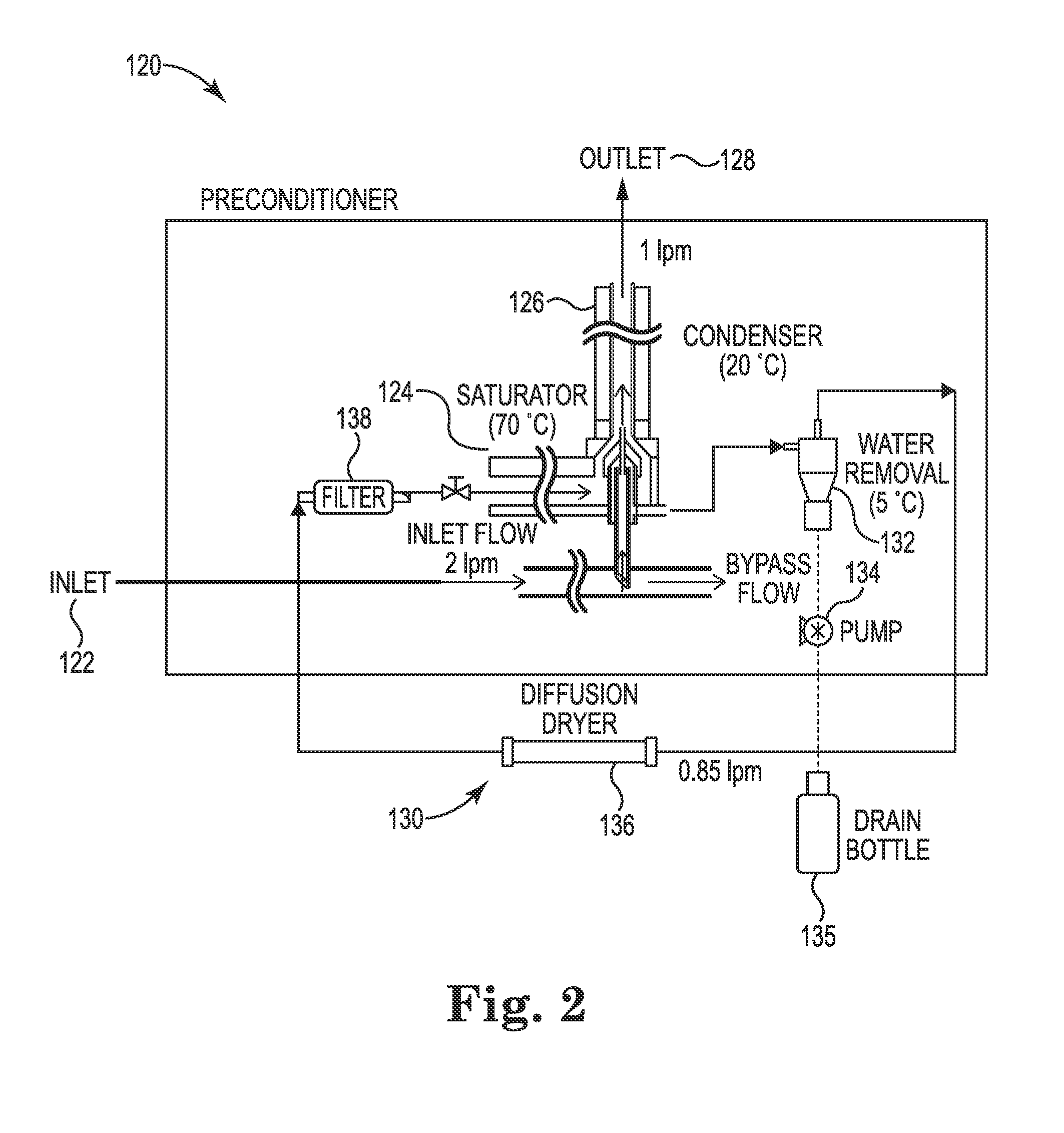Method and system for significantly improving charge probabilities of nanometer aerosol particles
a nanometer aerosol and charge probability technology, applied in the field of nanoparticle chargers, can solve the problems of difficult optical detection, adverse effect on human health, low differential mobility analyzer (dma) throughput, etc., and achieve the effects of improving the charge probability, poor monodispersity, and poor quality of single-size particles
- Summary
- Abstract
- Description
- Claims
- Application Information
AI Technical Summary
Benefits of technology
Problems solved by technology
Method used
Image
Examples
Embodiment Construction
[0015]Following are more detailed descriptions of various related concepts related to, and embodiments of, methods and apparatus according to the present disclosure. It should be appreciated that various aspects of the subject matter introduced above and discussed in greater detail below may be implemented in any of numerous ways, as the subject matter is not limited to any particular manner of implementation. Examples of specific implementations and applications are provided primarily for illustrative purposes.
[0016]The various embodiments of the invention are generally based on the fact that large aerosol particles have higher charge probabilities than smaller ones and hence seek to enhance the charge probabilities of sub-100 nm aerosols while minimizing the amount of aerosols with more than one charge. The high charge probability increases DMA throughput and the low multiple charge probability ensures high quality monodispersity which is important for mono-dispersed aerosol gener...
PUM
 Login to View More
Login to View More Abstract
Description
Claims
Application Information
 Login to View More
Login to View More - R&D
- Intellectual Property
- Life Sciences
- Materials
- Tech Scout
- Unparalleled Data Quality
- Higher Quality Content
- 60% Fewer Hallucinations
Browse by: Latest US Patents, China's latest patents, Technical Efficacy Thesaurus, Application Domain, Technology Topic, Popular Technical Reports.
© 2025 PatSnap. All rights reserved.Legal|Privacy policy|Modern Slavery Act Transparency Statement|Sitemap|About US| Contact US: help@patsnap.com



